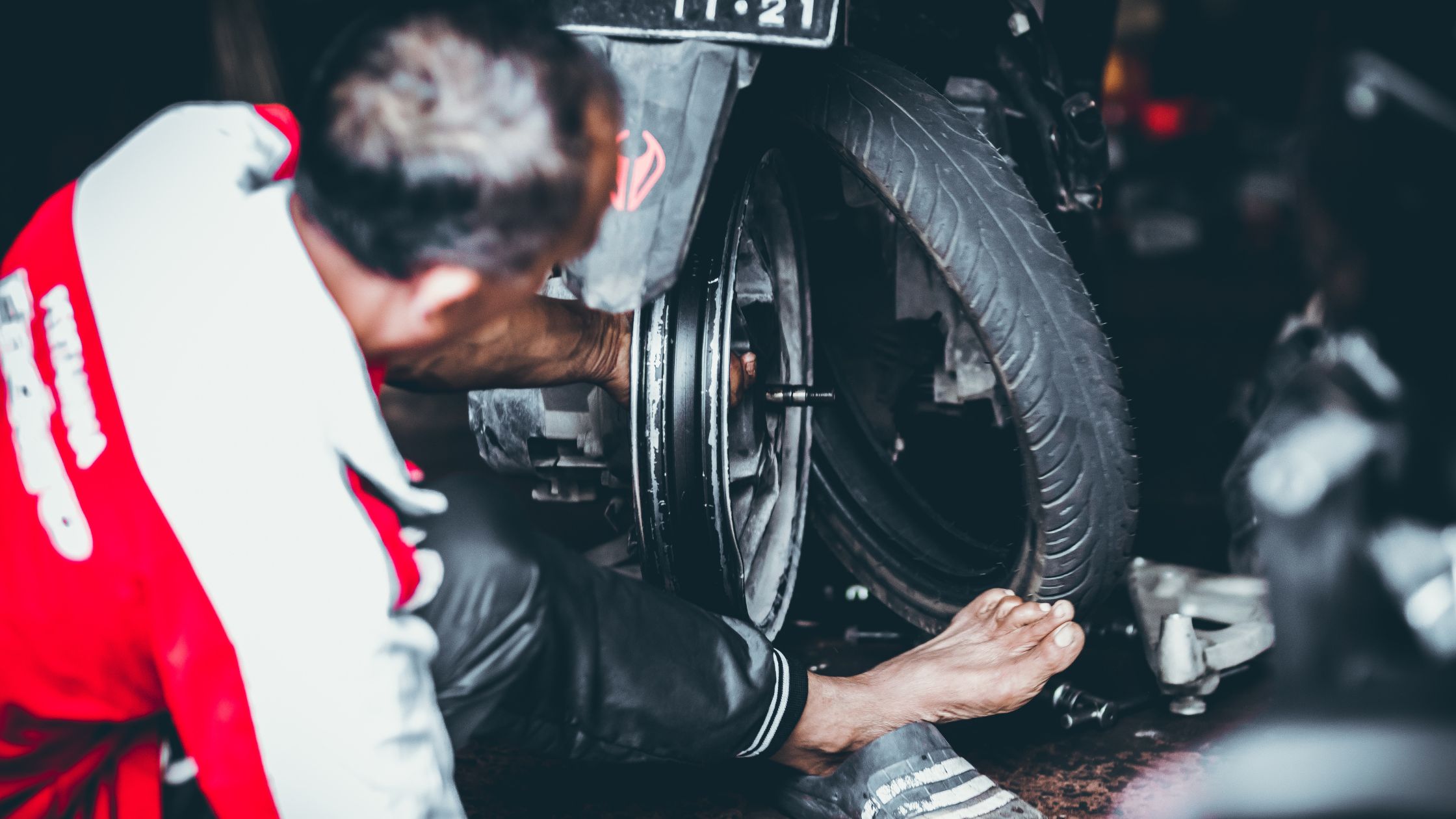Jika anda sedang mencari How To Count Motor Rpm Using Arduino, anda berada di tempat yang tepat! Disini saya akan mencoba membahas beberapa pertanyaan mengenai How To Count Motor Rpm Using Arduino.
How RPM of motor is calculated?
How to Calculate Motor RPM. To calculate RPM for an AC induction motor, you multiply the frequency in Hertz (Hz) by 60 — for the number of seconds in a minute — by two for the negative and positive pulses in a cycle. You then divide by the number of poles the motor has: (Hz x 60 x 2) / number of poles = no-load RPM.
What is motor RPM counter?
RPM counters are used to measure Speed of Motors (AC/DC) or any Rotating Object. They measures and indicates current Rotating Speed of Motor. They are very essential in applications like Speed Control of Motors and close Loop Control System.
How do you calculate RPM from encoder pulses in Arduino?
RPM = ((new_reading – old_reading )/ interval ) * 60*10)/ CPR. The only problem is the value I calculated is much larger than it should be.
How do I manually test my RPM?
Start the engine and read the screen on the tachometer. Once the engine starts, the tachometer will begin displaying the number of RPMs the engine is running at.
Which meter is used to measure RPM of a motor?
A tachometer (revolution-counter, tach, rev-counter, RPM gauge) is an instrument measuring the rotation speed of a shaft or disk, as in a motor or other machine. The device usually displays the revolutions per minute (RPM) on a calibrated analogue dial, but digital displays are increasingly common.
How do you calculate RPM machining?
The following equation is used to calculate spindle speed: rpm = sfm ÷ diameter × 3.82, where diameter is the cutting tool diameter or the part diameter on a lathe in inches, and 3.82 is a constant that comes from an algebraic simplifica-tion of the more complex formula: rpm = (sfm × 12) ÷ (diameter × π).
What device measures RPM?
A tachometer is an instrument designed to measure the rotation speed of a shaft or disk. Tachometers generally measure rotations per minute (RPM) though some models also serve as rate meters and/or totalizers. Measuring the rotational speed of a spinning object is important for a number of reasons.
Can you measure RPM with a multimeter?
Understanding how engine rpm is measured using a tachometer Now using a multimeter you can measure the Frequency between ground and the tachometer wire (car starter wire). These two values above can then be combined mathematically to create the RPM value you see on your tachometer.
What is the RPM of a 6 pole motor?
Six-pole motors run at 1,200 rpm unloaded (7,200 ÷ 6) and between 1,050 and 1,175 rpm loaded.
Which is better 2 pole or 4 pole?
2 pole motors have twice the speed of a 4 pole motor. Rotor of the 2 pole motor complete one cycle for every cycle of the source, while the rotor of the 4 pole motor completes only half a cycle for every single cycle of the source. Therefore, 4 pole motors consumes twice the energy of the 2 pole motors.
How do you calculate RPM and feed?
RPM = (12 * surface speed) / (π * tool/workpiece diameter). RPM = (12 * 600) / (3.14159 * 0.5). RPM = 4584 rev/min.
How do you convert m/min to RPM?
So, 0.314m per rotation. 120/0.314 = 382 rpm. If we maker the material 57mm, then it’s 57 * 3.14 = 179mm = 0.179m, and 120m/min gives 120/0.179 = 670 rpm.

What is RPM in water pump?
Most pumps operate at rotational speeds between 1000 and 3000 rpm but frequently reach in excess of 6,000 rpm with special gearing and turbine drives. Larger centrifugal pumps (e.g. cooling water pumps for power stations), however, are typically mated to slow-running electric drives that are very costly.
How many RPM is normal?
The normal RPM range for cars on highways is generally between 1500 rpm and 2000 rpm. The idle rotation ranges between 600 rpm and 1000 rpm. A diesel engine usually stays idle at around 750 rpm, while it runs at a speed of 110 km/h on 6th gear at 2000 rpm. However, petrol engines rotate at 6000 rpm at high speeds.
Is 5000 RPM too much?
5000 is where the fun starts. It’s not staying there for extended periods. You’ll be fine. The reason it’s so sluggish is that the transmission is programmed to save fuel so it’s always in a higher gear.
How is encoder frequency calculated?
Frequency = (RPM X Line Count/60) Use this formula when line count of the encoder and RPM are known. The answer is in Hertz (Hz) or cycles per second. Keep in mind that many encoders and drives will have a maximum frequency limit that you should not exceed.
What does an encoder measure?
An encoder is an electromechanical device that can measure motion or position. Most encoders use optical sensors to provide electrical signals in the form of pulse trains, which can, in turn, be translated into motion, direction, or position. Rotary encoders are used to measure the rotational motion of a shaft.
What is PPR in encoder?
Pulses Per Revolution (PPR) PPR describes the number of high pulses an encoder will have on either of its square wave outputs A or B over a single revolution.
How do you calculate RPM from encoder pulses?
RPM = (Frequency X 60)/ Line Count This will be our frequency, or the number of optical encoder counts that we have accumulated in one second. We then multiply that value by 60, which uses our one second total to convert to the number of pulses occurring in a minute.
How do you calculate speed from encoder pulses?
The first half of equation is Distance per 1 pulse = (200/ Number of pulses per rotation) / 1000, the latter half of equation is Number of output pulses/ Time = Number of pulses per minute = Frequency x 60. Then, Speed (m/min) = (200/ Number of pulses per rotation) / 1000) x Frequency x 60.
What is CLK in rotary encoder?
CLK (Output A) is the primary output pulse to determine the amount of rotation. Each time the knob is turned in either direction by just one detent (click), the ‘CLK’ output goes through one cycle of going HIGH and then LOW.
How does Arduino measure speed?
The output voltage of a proximity sensor is taken as analog input by the Arduino. It then calibrates the voltage in terms of RPM to measure the speed. The output voltage of the sensor is displayed in 7-segment display as well as in a computer screen. The computer screen also displays the measured RPM.
What RPM is an 8 pole motor?
To satisfy consumers’ desires for quieter motors, manufacturers have developed eight-pole motors. These operate at 900 rpm (unloaded) and approximately 800 rpm under load. They are being used in applications where customers expect quieter operation, such as room air conditioners and outdoor heat pump applications.
What sensor can measure RPM?
A tachometer is a device used to measure the RPM or Revolutions Per Minute of any rotating body. Tachometers can be contact based or non-contact ones. The non-contact or contact-less optical tachometers usually use laser or Infrared beam to monitor the rotation of any body.
Terimakasih telah membaca How To Count Motor Rpm Using Arduino, semoga jawaban dari pertanyaan anda telah saya jawab semua. Semoga bermanfaat!
 Mobil Series Situs Mobil Terbaik se-antero Bintaro
Mobil Series Situs Mobil Terbaik se-antero Bintaro
